Jules Verne: Doing the descent dance
Published on December 3rd, 2020
(December 3; Day 9) – After a long port tack of a few days which began at the exit of the Doldrums, Sodebo Ultim 3 jibed this evening off Rio de Janeiro as the team weaves around the St. Helena High in the South Atlantic. Now 135.28 ahead of the Jules Verne Trophy pace (as of 22:45 UTC), 32m trimaran should benefit from stronger winds tomorrow and soon find itself immersed in the atmosphere of the Deep South.
The end of the Brazilian summer is looming for skipper Thomas Coville’s crew who should soon change the atmosphere, since according to the routing cell, they will be in the Roaring Forties in two days, ahead of A depression which should quickly lead them towards the entrance of the Indian Ocean.
“It’s been a little cooler for a few hours, we feel that we are diving in the South and that in a few days, we will put on the fleeces, the boots, the base layers and get to the heart of the subject of this tour of the world that is the Great South,” confirms Martin Keruzoré, the media man, who, on this Jules Verne Trophy, also helps the crew with maneuvers.
The 30-year-old Breton had to find his rhythm to blend into this dual role.
“I am not managed by the watch like the others who have been doing quarters from the start. So I decided to live with the sun to spend as much time as possible on the bridge, not to miss the time for exchanges between the guys, the grazing lights in the morning and in the evening, I just try to make a nap during the day.
“And the maneuvers change my routine: I get up at night if I need to help the guys and crank it up. After a few days, I understood when I needed to be there to help them and when I could step back to film them.”
A privileged witness to the life of the crew, Keruzoré is delighted with the atmosphere on board. “The group is really united. All of the time we have spent together since the start of the year has been beneficial. There are no surprises because we all know each other. We’re really happy to be here, it’s just happiness, I hope it shows on the ground, we all have different personalities, but it makes a great entity.
An entity masterfully led by Thomas Coville, who, according to the media man, “plays his role of team leader perfectly well, he is always there to listen to the guys, to give them confidence, it is super positive for the future and especially for the South that some do not know.”
And the skipper of Sodebo Ultim 3 is often there to share meals, moments of conviviality appreciated by all. “We eat pasta twice a week, Thomas Rouxel takes care of it, the cooking professional. We all meet around the galley, which is well placed for life on board, fairly central, these are nice moments,” adds Keruzoré.
In addition to his roles as media man and crew, Keruzoré and Thomas Rouxel are in charge of the crew fuel. “Every day I assemble the bags of freeze-dried meals stored in the central shell, it also allows me to see what was consumed the day before, to make an inventory so that we have enough to last 40 days.”
Crew list: Thomas Coville, François Duguet, Sam Goodchild, Corentin Horeau, Martin Keruzoré, François Morvan, Thomas Rouxel and Matthieu Vandame.
After starting at 02h 55min (French time) on November 25, to grab the Jules Verne Trophy (40:23:30:30), the 32-metre Sodebo Ultim 3 must cross the finish line in Ouessant before January 5 at 2h25min (French time, subject to World Sailing Speed Record Council).
The rules for the Jules Verne Trophy are simple – it is for the fastest time around the world by any type of yacht with no restrictions on the size of the crew, starting and finishing from the exact line between the Le Créac’h Lighthouse off the tip of Brittany and the Lizard Point in Cornwall. It was first won in 1993, with all nine winners as either catamarans or trimarans. The current challenge is to beat the record time of 40 days 23 hours 30 minutes and 30 seconds set by Francis Joyon and crew on the 31.5m IDEC Sport in 2017.
Record Facts
• Start and finish: a line between Créac’h lighthouse (Isle of Ushant) and Lizard Point (England)
• Course: non-stop around-the-world tour racing without outside assistance via the three Capes (Good Hope, Leeuwin and Horn)
• Minimum distance: 21,600 nautical miles (40,000 kilometres)
• Ratification: World Sailing Speed Record Council, www.sailspeedrecords.com
• Time to beat: 40 days, 23 hours, 30 minutes and 30 seconds
• Average speed: 21.96 knots
• Date of current record: January 2017
• Holder: IDEC SPORT, Francis Joyon and a 5-man crew
Split Time References – Full Crew:
Ushant-Equator: 4d 20h 07 ‘(Spindrift 2 in 2019)
Equator-Cape Aiguilles: 6d 08h 55 ‘(Banque Populaire V in 2012)
Cape Aiguilles-Cape Leeuwin: 4d 09h 32 ‘(IDEC Sport in 2017)
Cape Leuuwin-Cape Horn: 9d 08h 46 ‘(IDEC Sport in 2017)
Cape Horn-Equator: 7d 04h 27 ‘(Banque Populaire V in 2012)
Equator-Ushant: 5d 19h 21 ‘(IDEC Sport in 2017)
Here are the nine that have held the trophy:
2017 – Francis Joyon / IDEC SPORT (31.5m) – 40:23:30:30
2012 – Loïck Peyron / Banque Populaire V (40m) – 45:13:42:53
2010 – Franck Cammas / Groupama 3 (31.5m) – 48:07:44:52
2005 – Bruno Peyron / Orange II (36.8m) – 50:16:20:04
2004 – Olivier De Kersauson / Geronimo (33.8m) – 63:13:59:46
2002 – Bruno Peyron / Orange (32.8m) – 64:08:37:24
1997 – Olivier De Kersauson / Sport-Elec (27.3m) – 71:14:22:08
1994 – Peter Blake, Robin Knox-Johnston / Enza New Zealand (28m) – 74:22:17:22
1993 – Bruno Peyron / Commodore Explorer (28m) – 79:06:15:56


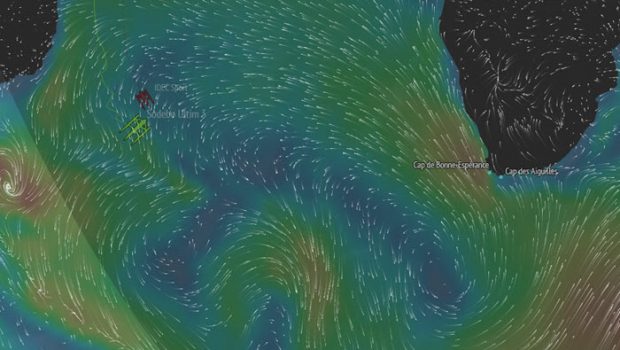


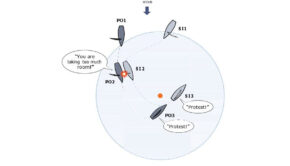
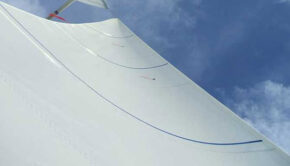
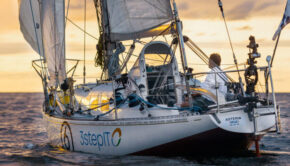
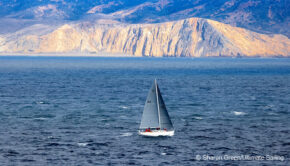
 We’ll keep your information safe.
We’ll keep your information safe.